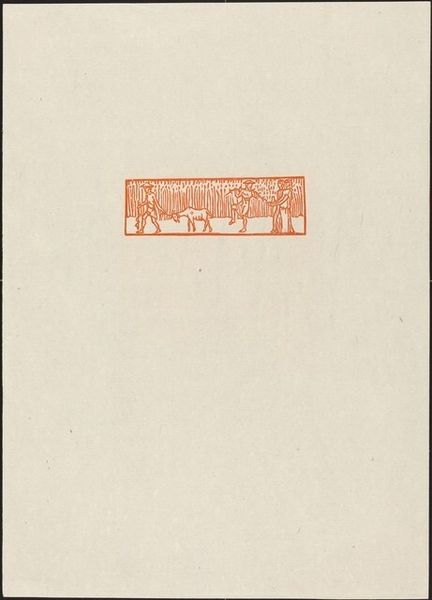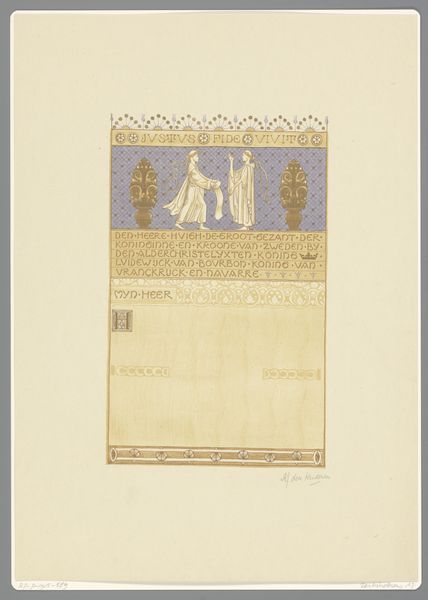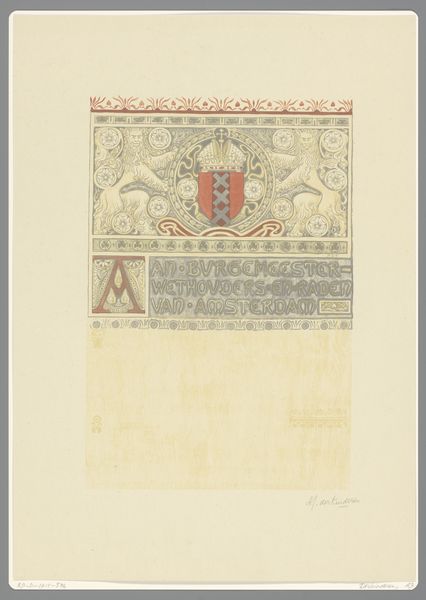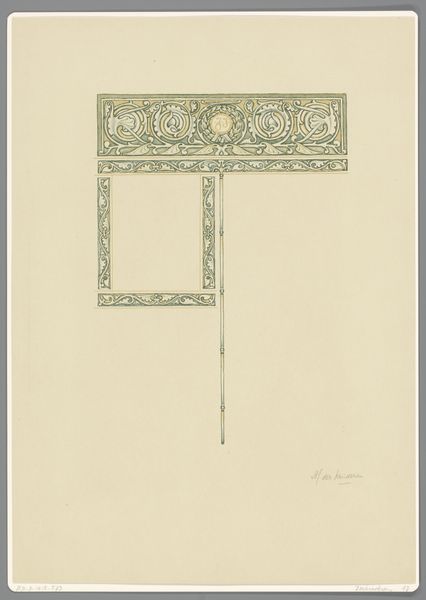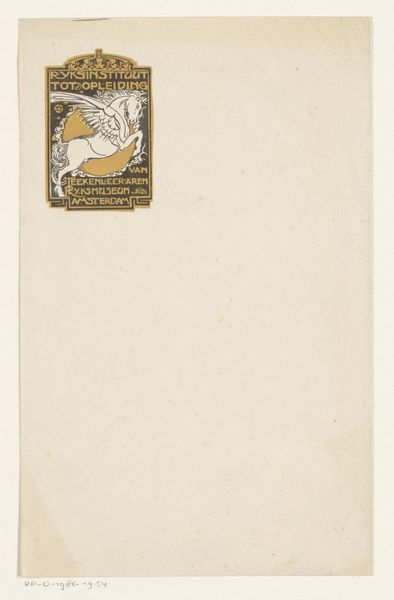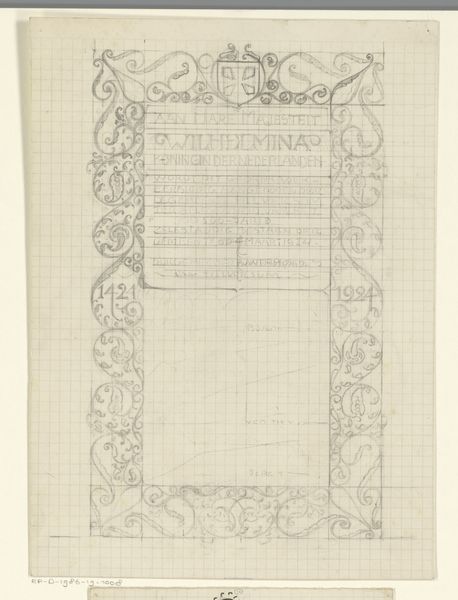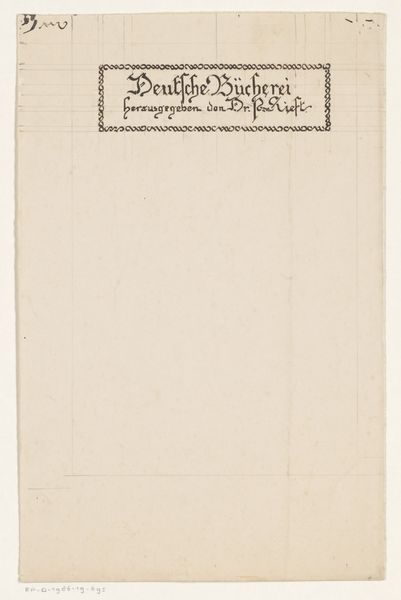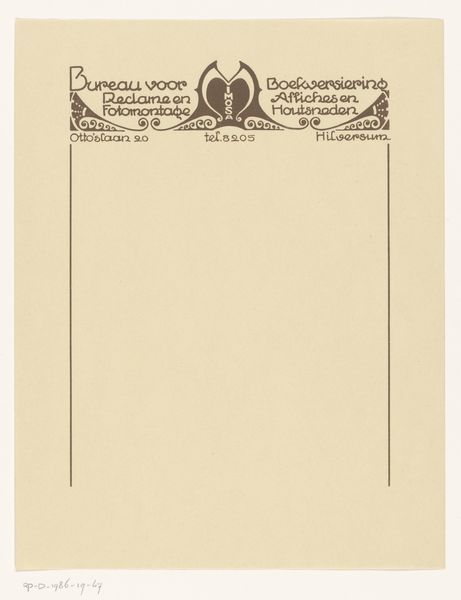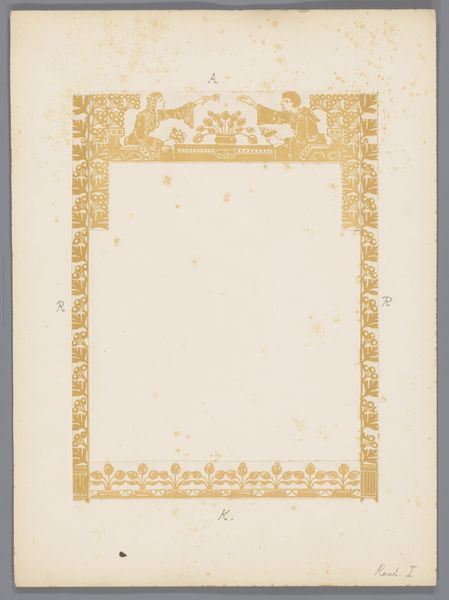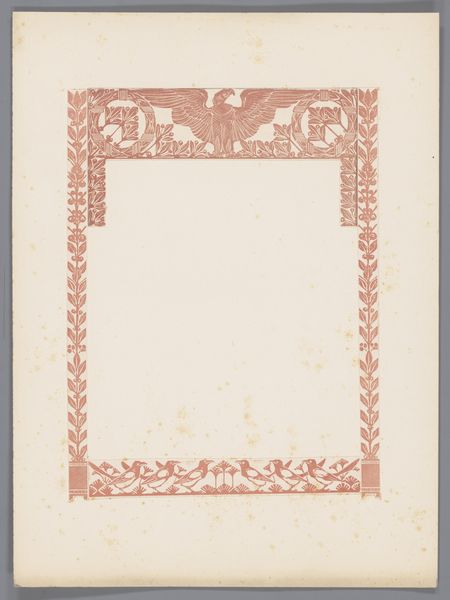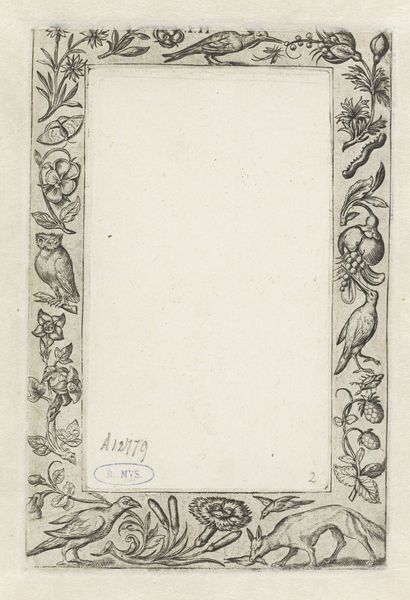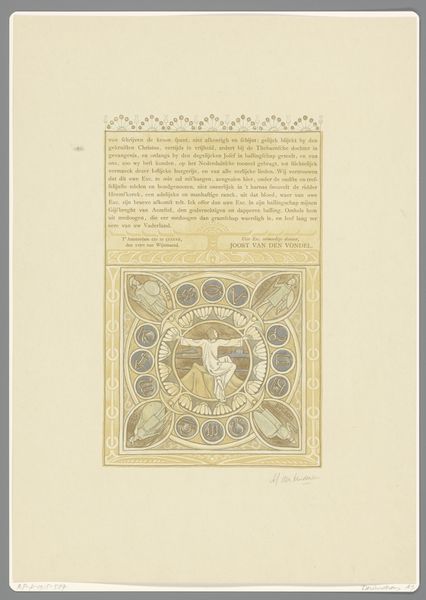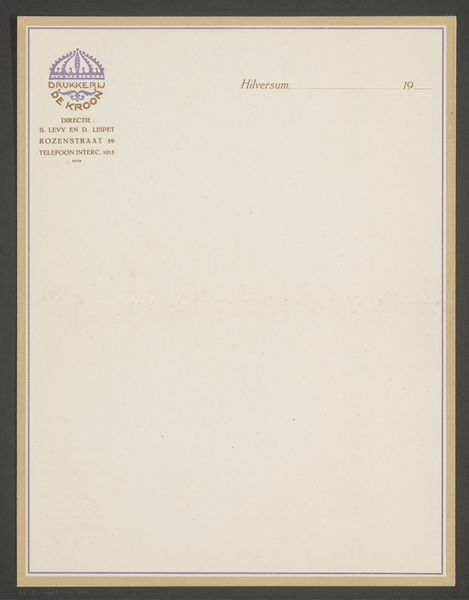
drawing, graphic-art, paper, typography
#
drawing
#
graphic-art
#
art-nouveau
#
paper
#
typography
Dimensions: height 414 mm, width 295 mm
Copyright: Rijks Museum: Open Domain
Curator: What strikes you most about this work? Its understated palette or perhaps the almost calligraphic repetition of lines? Editor: It feels both functional and precious. Like a beautifully crafted ledger, meant to hold important information. There's a dedication to craft evident even at first glance. Curator: Precisely. What we have here is a drawing titled "Inhoud van het eerste deel", which translates to "Contents of the First Part", by Antoon Derkinderen. Created between 1894 and 1901, this piece beautifully exemplifies the Art Nouveau movement in graphic arts. Editor: Art Nouveau valued design deeply, and this shows that value so beautifully. How was it produced? The evenness of lines almost suggests printed work. Curator: Actually, this is a drawing. Its medium is ink on paper. Look closely, and you’ll observe the incredible draftsmanship and subtle tonal variations. Derkinderen clearly elevated the humble list into a fine art object. This was intended for a limited edition, further blurring the line between mass production and individual artistry. Editor: So it’s commenting, then, on how information is disseminated and valued at the turn of the century. Before mass media took hold. It almost romanticizes the manual recording and cataloging of knowledge, while still using reproducible means for this one work. Curator: Yes. The borders are decorated with these charming vignettes of scribes diligently at their desks, writing. It is about how cultural institutions shaped not only art itself, but also the intellectual landscapes through their collections and publications. It represents the public role of disseminating information but framed inside an aesthetically pleasing piece of artwork. Editor: Derkinderen seems interested in the book as an aesthetic object. Not simply its functional nature but also about what a book conveys beyond information and it suggests to us the value we, as a society, should place on those who produce culture. Curator: Absolutely. He elevates not just the information but the entire system through which that knowledge is shared. Editor: Well, after that conversation, I’ll certainly never look at a list the same way again! Curator: Nor I. It brings attention to all of the elements that brought culture to us as a public in that time period.
Comments
No comments
Be the first to comment and join the conversation on the ultimate creative platform.
